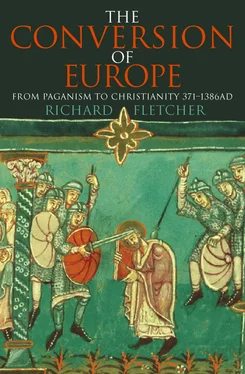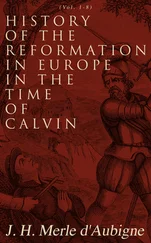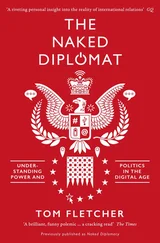In what sense and when Constantine became a Christian are questions that have been endlessly and inconclusively debated. In the formal sense of the word he was not initiated until shortly before his death in 337. Like many others in the early church he chose to postpone baptism until his deathbed. But his adhesion to Christianity from 313 onwards was not to be doubted. Its most enduring manifestation was in open-handed patronage. Constantine did not make Christianity the official religion of the Roman empire, though this is often said of him. What he did was to make the Christian church the most-favoured recipient of the near-limitless resources of imperial favour. An enormous new church of St Peter was built in Rome, modelled on the basilican form used for imperial throne halls such as the one which survives at Trier. The see of Rome received extensive landed endowments and one of the imperial residences, the Lateran Palace, to house its bishop and his staff. Constantinople, begun in 325, was to be an emphatically and exclusively Christian city – even though it was embellished with pagan statuary pillaged from temples throughout the eastern provinces. Jerusalem was provided with a splendid church of the Holy Sepulchre. Legal privileges and immunities rained down upon the Christian church and its clergy. The emperor took an active part in ecclesiastical affairs, summoning and attending church councils, participating in theological debate, attempting to sort out quarrels and controversies.
1. The Mediterranean world in late antiquity.
The adhesion to Christianity of Constantine and his successors with the single exception of the short-lived Emperor Julian ‘the Apostate’ (361–3) – was a development of the utmost weight and significance in Christian history. All sorts of relationships were turned topsy-turvy by it. From being a vulnerable, if vibrant, sect liable to intermittent persecution at the hands of the secular authorities, Christians suddenly found themselves part of the ‘establishment’. The end of persecution meant that martyrdom must thenceforward be found only outside Christendom or be understood in a metaphorical rather than a literal manner. Christian bishops were no longer just the disciplinarians of tightly organized sectarian cells but rapidly assimilated as quasi civil servants into the mandarinate which administered the empire. Their churches were no longer obscure conventicles but public buildings of increasing magnificence. So much, and more, flowed from Constantine’s spiritual reorientation.
The church repaid Constantine’s generosity by presenting him as the model Christian emperor, the ‘friend of God’ who ‘frames his earthly government according to the pattern of the divine original’. The words are those of Eusebius, bishop of Caesarea, who lived from c. 260 to c. 340. Eusebius was a notable scholar and a prominent member of the little circle of court clerics who helped to school Constantine in Christian ways and to shape an image of him for contemporaries and for posterity. His Oration in Praise of Constantine , from which the passages quoted above are taken, is a prime example of fourth-century rhetoric, a work of oily panegyric which was hugely successful in carefully directing attention to all that was most admirable in its subject while discreetly drawing a veil over the less appealing features of the emperor’s character. It is not to Eusebius that we must go to learn that Constantine murdered his father-in-law, his wife and his son. On the contrary, Constantine was ‘our divinely favoured emperor’, who has received ‘as it were a transcript of the divine sovereignty’ to direct ‘in imitation of God himself, the administration of this world’s affairs’. 2
Eusebius’ handling of Constantine requires to be considered in the context of early Christian thinking about the relationship between the church and the world. For simplicity’s sake one may distinguish two contrasting tendencies. The first was an attitude of wariness towards the secular world, of distrust, even of hatred for it. The Christian church was a society set apart, a ‘gathered’ community of the elect salvaged from the polluting grasp of the world, though still menaced by it in the form of the secular state, the Roman empire. The most violent expression of these views in early Christian writings is to be found in the book of Revelation, composed towards the end of the first century. The Roman empire is the beast, the harlot, ‘drunk with the blood of the saints and the martyrs of Jesus’. Keeping the world at arm’s length long remained an urgent concern among some Christian groups. We shall return shortly to some of its manifestations in the late antique period.
The second tendency was the quest for some form of accommodation with the secular world and the empire. This search was muted and hesitant at first but gained in confidence and assertiveness as time went on. The earliest sign of it may be glimpsed in the two New Testament books attributed to Luke. It is significant that both were dedicated to Theophilus, a patron of social or official eminence in that very world, secular, gentile and Romano-Hellenistic, which other Christians regarded with misgiving. A next step was to ponder the implications of the coincidence in time between the establishment of the Roman peace and the growth of the Christian church within the empire. Bishop Mellitus of Sardis, addressing an Apologia to the Emperor Marcus Aurelius about the year 170, could claim that the Christian faith was ‘a blessing of auspicious omen to your empire’ because ‘having sprung up among the nations under your rule during the great reign of your ancestor Augustus … from that time the power of the Romans has grown in greatness and splendour’. The next move was to suggest that the Roman empire was in some sense itself related to God’s scheme for the world. The first who dared to think such a thought was the great Alexandrian scholar Origen. In his work Contra Celsum , composed between 230 and 240 to refute the attacks on Christianity by the pagan philosopher Celsus, Origen had occasion to comment upon the following words in Psalm lxxii.7: ‘In his [the just king’s] days righteousness shall flourish, prosperity abound until the moon is no more.’ Origen observed that ‘God was preparing the nations for His teaching, that they might be under one Roman emperor, so that the unfriendly attitude of the nations to one another caused by the existence of a large number of kingdoms, might not make it more difficult for Jesus’ apostles to do what He commanded them when He said “Go and teach all nations” …’ Augustus therefore, who first ‘reduced to uniformity the many kingdoms on earth so that he had a single empire’, could be presented as the instrument of God’s providence. 3
These accommodating tendencies were carried to extreme lengths after Constantine’s adhesion to Christianity early in the fourth century. Faced for the first time with an entirely novel situation, churchmen had to come to grips with the question, How is a Christian emperor to be fitted into the scheme of things? The most comprehensive answer was provided by Eusebius, explicitly in his Oration , implicitly in the work to which the Oration was a pendent, the Ecclesiastical History – the earliest work of its kind, the most important single source for our knowledge of the first three centuries of Christian history, and a potent literary influence upon the work of Bede. Eusebius brought the Roman empire within the divine providential scheme for the world. It was an astonishing feat of intellectual acrobatics, here summarized in the words of a modern scholar:
Eusebius sees the achievement of a unified Christian empire as the goal of all history. He insists on the mutual support of Christianity and Rome, of the monarchy of Christ and the monarchy of Augustus. For him, Roman empire and Christian church are not only essentially connected; they move towards identity … Eusebius can say that the city of earth has become the city of God, and that the monarchy of Constantine brings the kingdom of God to men. 4
Читать дальше












